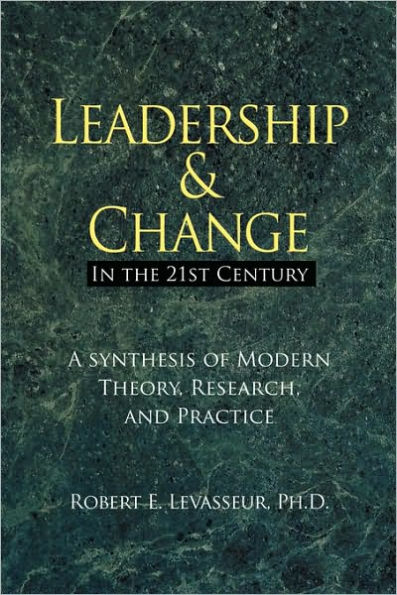The Modern Leadership Model: A Creative Synthesis
How do you lead? Do you plan, organize, staff, exert influence, and control? Or is that the definition of management? Do you focus on providing strategic direction and leave the implementation to others? Or do you dive into the details of day-to-day operations to ensure that people do things right? Do you one-minute manage, or do you focus on moving the cheese?
The answer is a resounding “None of the above.” In fact, the answer lies in a creative synthesis of time-honored management practices, contemporary leadership principles, and a few secret ingredients from the experts in change management.
Kurt Lewin’s famous three-stage model of change—unfreezing, moving, and refreezing—is the starting point in our design process. To reinforce the primacy of Lewin’s ingenious solution to the basic problem of systemic change (be it individual growth, team development, organizational change, or societal transformation), our modern leadership model has three basic parts, not two, four, seven or any other number.
Unfreezing by Visionary Direction Setting
Lewin provided us with yet another key element for the modern leadership model. Namely, that unfreezing should be a positive process aimed at engaging the members of the system in the change process, not a negative one aimed at coercing their participation.
Hence, the first stage in the model begins with the creation of a powerful, compelling vision of a future that excites, energizes, and engages everybody involved in the change effort. It is important to note that leaders do not accomplish this in isolation, but together with their followers.
Moving by Action Research Implementation
Once the “collective purpose” or common vision of the future is in place, a plan to get from the current state of affairs to the desired future state is necessary. Here, the traditional concept of planning has its day, but not in the old fashioned, top-down manner often associated with a formal planning process. In its place, is a participative, third-party led, action research intervention designed to engage the major stakeholders in a collaborative process for deciding how to bridge the gap between the current reality and the common vision of an ideal future state. The result of this process is both a plan of action and a highly motivated, empowered set of participants.
A collaborative, team-based effort, led by empowered members of the system highly motivated to implement the joint action plans and change strategies accelerates the moving phase of the process. In practice, this resembles the operation of a championship team or a symphony orchestra in that people work together, regardless of position, to achieve the common vision.
Team members and leaders mutually agree to and jointly monitor progress against project goals. As they view the need for corrective action as integral to the process and not cause for blame, team members take corrective action jointly and swiftly to keep the mission on course. If the team agrees that a team member needs to learn a new set of skills to enable the team to move ahead, the team, with the consent of the leader, authorizes the necessary training or development. In short, team members work together with leadership to get the job done.
Refreezing by System Development and Learning
The final step in the modern leadership model involves the institutionalization of changes made to achieve the vision. This consists of two types of initiatives: those that focus on improving the current functioning of the overall system (i.e., system development) and those that focus on enhancing its future effectiveness (i.e., system learning).
System development efforts focus on improving system effectiveness by implementing throughout the system the new methods created during the change process. In effect, they enable the members of the system to become better at their current work. On the other hand, system learning efforts try to answer the question, “Is there a better way to do this in the future?”
There are many techniques for refreezing a situation after a major change effort. They include traditional methods, such as individual training and development and organization development, as well as more contemporary approaches, such as organizational learning, and knowledge management.
Summary
The modern leadership model is by design a simple and, hopefully, elegant three-part process, grounded in the theories and research findings of experts in the field of leadership and change, such as Kurt Lewin and Peter Senge, which any transforming leader can apply to enable substantive change.
These steps are:
- Unfreezing: Visionary Direction Setting
- Moving: Action Research Intervention
- Refreezing: System Development/Learning
To learn more about the modern leadership model and how to apply it to problems in contemporary organizations and society, read Leadership & Change in the 21st Century.

